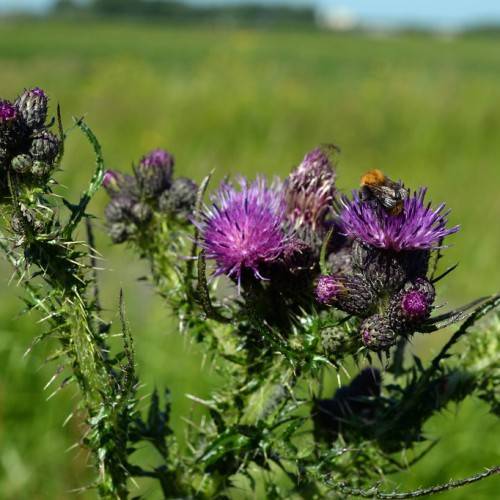
Plumeless Thistle
Carduus x orthocephalus
Watering:
Frequent
Hardiness Zone:
Sun:
full sun,part shade
Fruits:
Fruits Ready In
Leaf:
Yes
Growth Rate:
Low
Poisonous To Pets:
Yes
Salt Tolerant:
Yes
Thorny:
Yes
Invasive:
Yes
Care Level:
Medium
watering
Nodding Thistle thrives in moist, well-draining soils and requires regular watering throughout its growing season. During the summer months, water the plant on a weekly basis, providing at least 1 to 2 inches of water each time. Water deeply, allowing the water to sink into the soil around the roots of the plant. However, it's important not to overwater, as too much moisture can cause root rot. During drier, cooler months, reduce watering to once or twice a month.
sunlight
Nodding thistle (Carduus nutans subsp. nutans) grows best in full sunlight. Ideally, 6-8 hours of sunlight should be provided daily for optimal growth. The best time of day for the plant to receive sunlight is mid to late morning when the sun’s rays are strongest. If possible, provide direct sunlight from the early to late morning hours and then supplement with dappled sunlight or part shade for the remainder of the day. Additionally, the plant should also receive some protection from strong winds.
pruning
Nodding Thistle typically requires pruning about once per year in late winter or early spring, just prior to their growth cycle. Pruning should be done when the plant is just beginning to produce new growth, but before it has new buds or flowers. Pruning involves cutting off any dead or dying stems and flowers, as well as any stems and branches that are excessively congested and have vigour reduced. Trim away excess stems and flowers to achieve a defined shape or to avoid obstructing pathways, which can prevent pedestrians and vehicles from passing safely. Additionally, 1 can cut back the stems to a manageable size for easier handling when disposing of the material. After pruning, it is recommended to apply a balanced fertilizer and to water regularly to help these plants recover their vigour.
